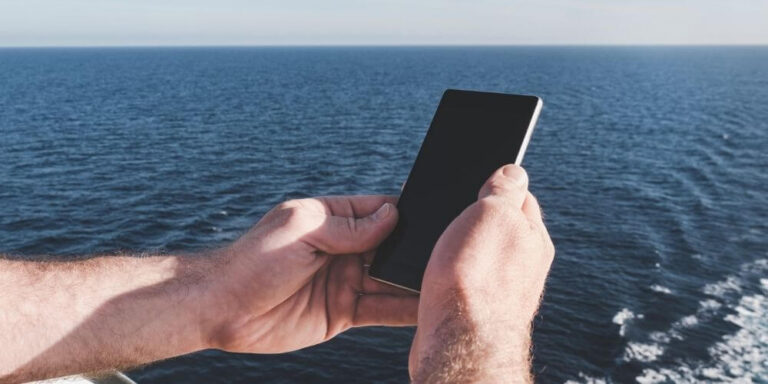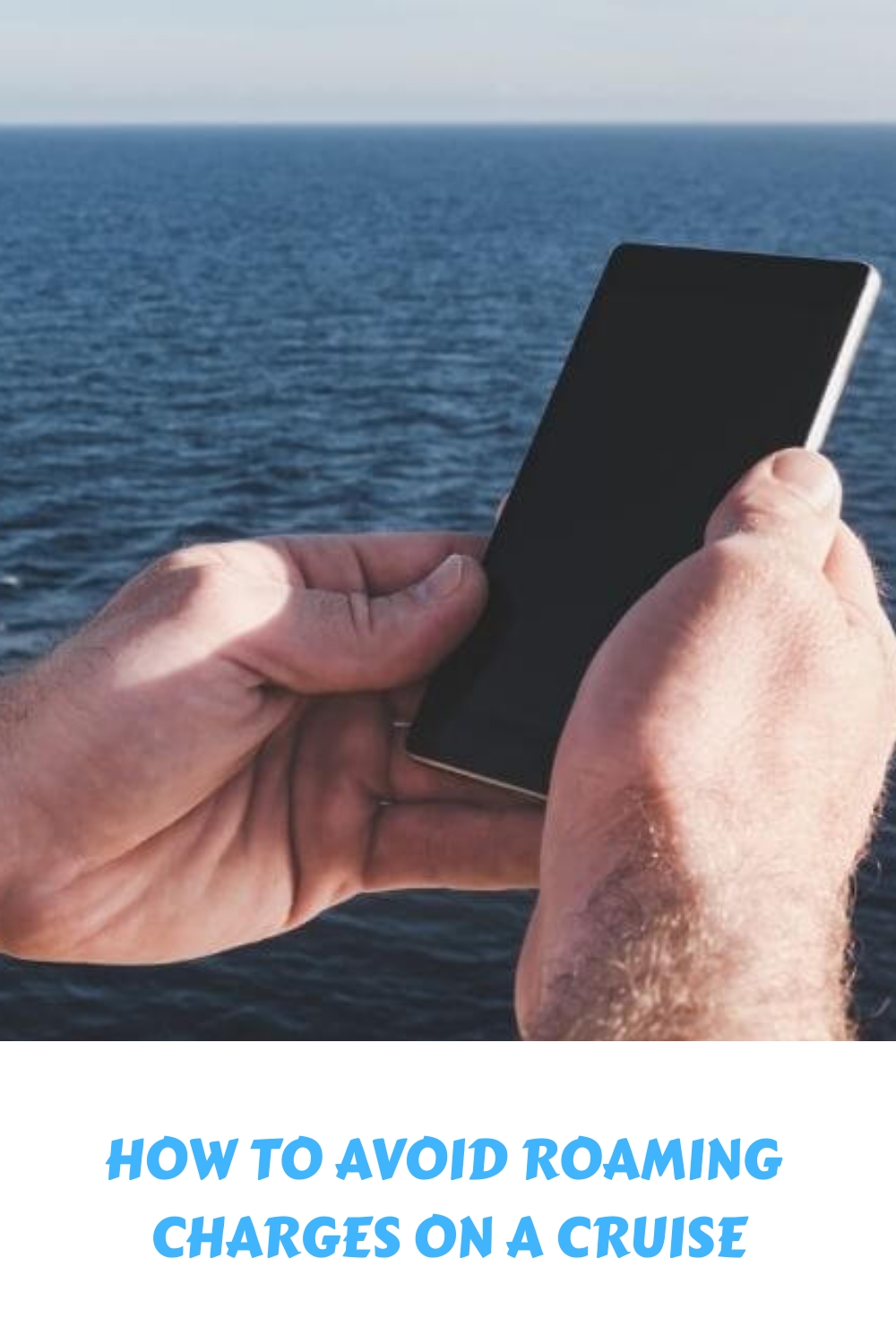Using your cell phone while traveling is something most of us take for granted, but using your cell phone while cruising can mean huge mobile data roaming charges at sea.
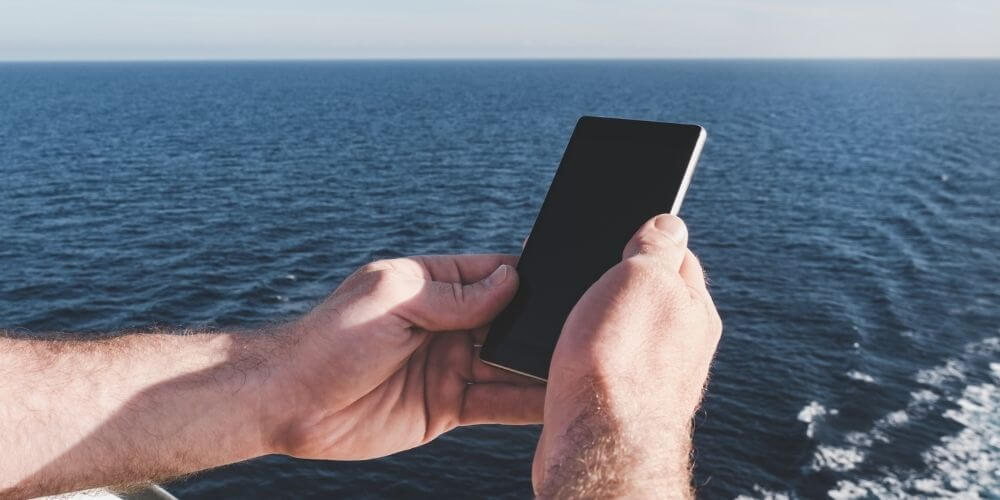
This is true even if you don’t actually use your phone and leave it turned on: certain apps can run in the background without your knowledge, continually updating and using mobile data while at sea.
Read on to find out how to avoid unexpected phone bills after your cruise.
Roaming charges explained
Roaming refers to using your mobile phone abroad. A mobile phone is classified as “roaming” if it uses a different overseas network than your usual provider.
Roaming regulations mean that when you use your mobile phone abroad, you incur roaming charges that vary depending on the mobile network. Data roaming specifically refers to internet connection, but roaming also applies to calls and SMS.
Whether you’re using your phone to stay in touch with your home country or to post photos of your latest food meal online, it’s important to find out how much your network will cost before you go abroad.

Cost of using your cell phone on a cruise
Roaming costs are determined entirely by network tariffs and vary depending on your mobile phone provider. Since January 2021, when Brexit officially came into effect, the rules regarding data roaming and charges have changed.
Since Brexit, UK mobile users no longer automatically have free roaming within the EU. Many providers continue to offer roaming in Europe at no extra charge, but we recommend contacting your network provider to check if your destination is covered to avoid incurring charges.
Roaming costs at sea
When you’re cruising, you’re constantly changing locations. Whether you’re traveling from port to port or crossing oceans, you’re at sea most of the time. When you do this, your phone connects to a maritime network instead of the usual satellite that connects you on land, which can mean very expensive mobile data roaming charges.
Data roaming costs are incurred by calls, texts and data usage and may be charged per day, per minute or by the amount of data used.
Some people have actually been duped by this, thinking they would pay the same data roaming charges on a cruise ship as they would on land: one man from Yorkshire received a bill for £340 after his phone connected to the marine network, despite having paid extra for an extra roaming package.
One American woman received a bill for $2,700 despite having paid for the ship’s WiFi package and an international roaming plan, while another unlucky family received a bill for 12,000 euros after their 12-year-old son watched a video during a cruise to Norway – a rather hefty maritime network fee charged for a bit of boredom.

If you want to avoid data roaming charges altogether, here are some possible solutions: GigSky We offer convenient eSIM data plans customized for travelers. Click here to visit GigSky and use our discount code. Cruise Mommy 10 You will receive a 10% discount on the plan.
Why traveling on a cruise ship is so much more expensive than traveling on land
At sea, mobile phone signals come through maritime providers called maritime networks. Because there are no mobile phone antennas at sea, signals must come from satellites instead.
It costs a lot of money to launch a satellite into space, and using WiFi at sea is expensive due to the high demand for satellite communications and the limited amount of data that needs to be transmitted.
If you’re interested in the technical details of how maritime networks work, read this article for more information.

Tips to avoid roaming charges at sea
Luckily, there are a few ways to avoid maritime network roaming charges while on a cruise.
1. Turn off your phone
The easiest way, but by no means the best, is to turn off your cell phone – either put it in a safe until you arrive at a port with access to the network of the country you’re visiting, or, even better, wait until you get home.
2. Use Airplane Mode
Many of us can’t spend more than a few hours without our phones, so we’re more likely to choose other options, such as using airplane mode.
Airplane mode (also known as flight mode) simply turns off all data access on your phone, but you can still use it as a device to set alarms and take photos.
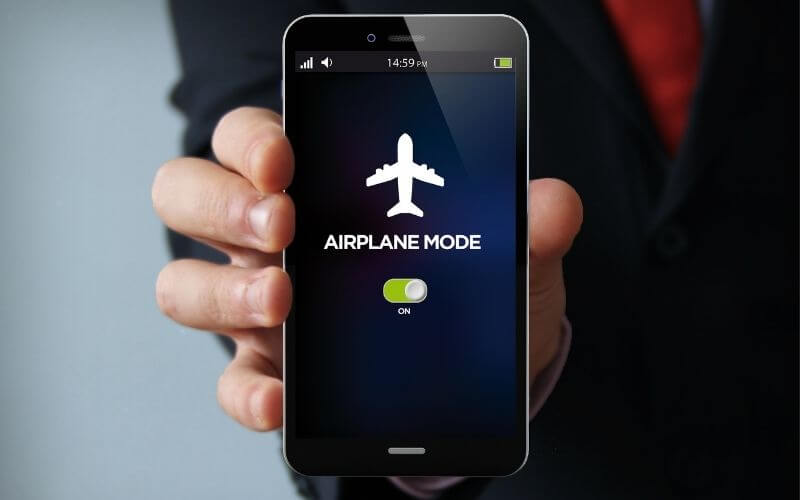
3. Use the ship’s WiFi
If you still want to make calls, read and reply to text messages, browse the internet, or update your social media, you’ll need to use the ship’s WiFi.
Most cruise lines offer WiFi packages that allow hourly, daily, or unlimited access while at sea. WiFi packages vary by cruise line and can be paid for up front or added on board.
New deals released!
Don’t miss out on our hottest cruise offers…
The main points to remember are…
The trick to avoiding data roaming charges on a cruise is to put your phone into airplane mode as soon as the ship leaves port, whether you use the ship’s WiFi or not – this is the best way to avoid data charges at sea.
Once the ship is within a few hundred meters of shore, your phone connects to the maritime network and charges can start to add up even if you’re not actually using it. If someone sends you an email and your phone automatically downloads it, you’re charged.
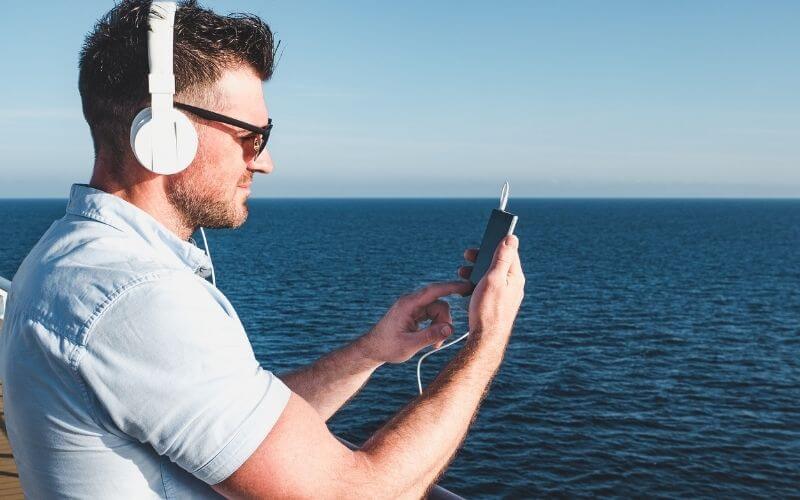
Alternatives to calling and texting while on your cruise
If you have a WiFi package on your cruise, you may not be able to use it for regular phone calls or text messages. However, there are some alternatives you can use…
WhatsApp is a great option as it allows instant messaging, video calling, and voice calling, including photos and videos. It works just like a regular call, but over Wi-Fi.
Skype works in much the same way, but is primarily used as a video calling application. Facetime is another option that works similarly for iPhone users.
Some people use walkie-talkies to keep in touch with their families while on a cruise, which is especially popular with teenagers and older children as it’s a lot of fun.
There are plenty of other options out there, so be sure to let your family know what options you plan on using to stay in touch.
If you want to know how to send text messages for free on a cruise ship, there are a few ways to do it, and we have a complete guide on how to do it here: How to send text messages for free on a cruise ship.
Conclusion
Data roaming charges can be scary and costly, but if you know the steps to prevent them, you can still enjoy the fun of uploading your favorite photos and calling your family back home.
The important thing to remember is not to let your phone connect to the maritime network – you will need to keep it in airplane mode while at sea and purchase a Wi-Fi package if you want to use it for calls, messages and internet access.
You should also check with your network provider about roaming charges while on land. If your cruise destination doesn’t offer roaming charges, you may have the option of only using your mobile phone while the ship is in port.
Some providers even let you set limits on roaming usage before you travel, so while you might still be charged high fees for cruise ship roaming with O2 or Vodafone, you’ll at least have a little control.
Whatever you decide, it’s a good idea to have a plan in place before you leave, whether that means paying for Wi-Fi while on board or doing a complete digital detox.
Related Posts:
If you find it interesting, please share it!

Jenny Fielding is the founder of Cruise Mummy. She has been working in the cruise industry since 2015 and has been on over 30 cruises. She currently helps over 1 million people each month plan their perfect cruise vacation.
Read more about me


